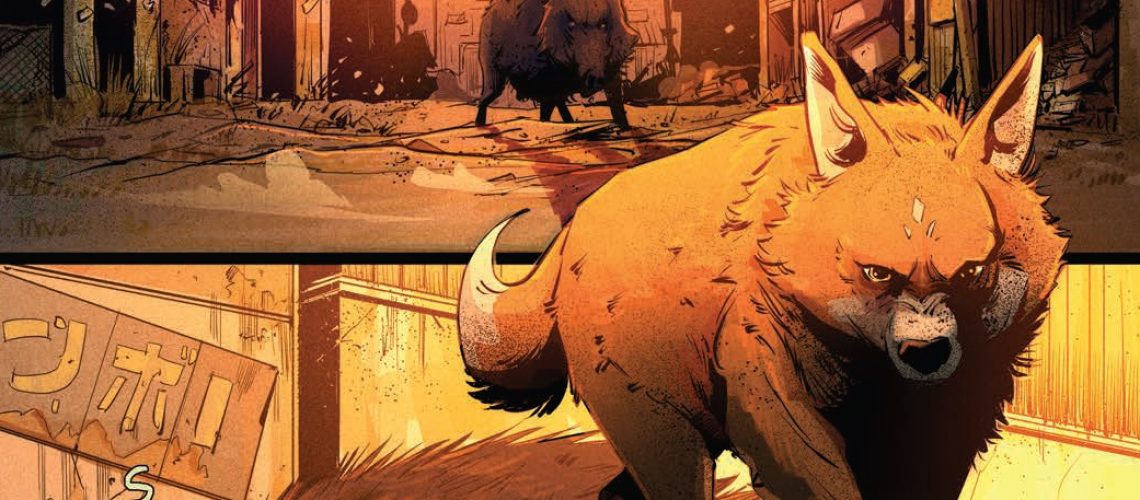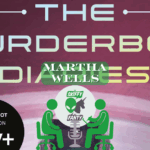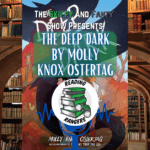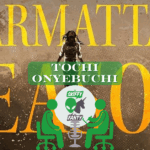The bond between pets and their human families is one that we love to celebrate, and that’s distinctly (though not uniquely) true of dogs. Maybe it’s because unlike cats, dogs are never shy about showing that they love us. Maybe it’s because we instinctively blur the idea of family and pack, and we know that dogs do the same. Maybe it’s because so many dogs, old or young, big or small, so clearly see themselves as our helpers and protectors.
The idea of a pet undergoing a long and arduous trek to be reunited with the humans they love is a particularly resonant one, that’s explored regularly in both feel-good news stories, and fiction.
So, take a boy, add his beloved dog, separate them via a terrifying natural disaster, and you have the recipe for a tremendously compelling story.
And that’s before we add the nuclear accident.
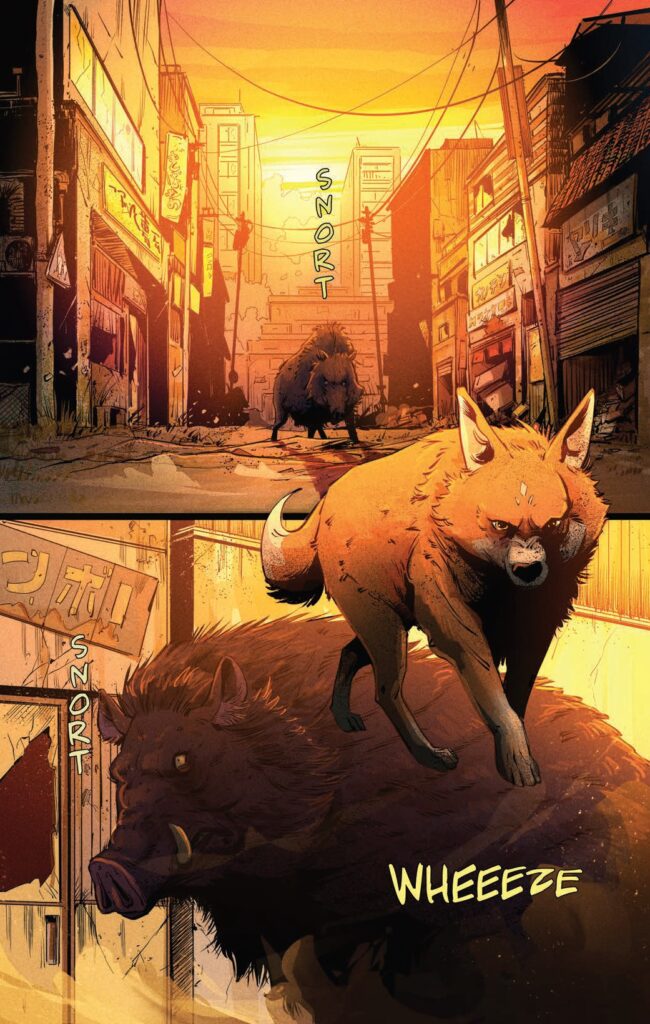
Kiva Volume 1
Published by Scout Comics
Written by Motoki Takatsu and Yumiko Fujiwara
Art by Bashir Ahmed
Colors by Leonardo Mazzoli
Edited by Lexa Molinari
(The publicist provided an electronic copy of the complete Kiva Volume 1 for review. This story is being serialized and released as individual comic books; issue #1 went on sale at the end of July.)
Kiva is the beloved pet of Toru, who found him as a stray puppy, and they live a happy – not idyllic, although Kiva certainly thinks it is – but happy life together with Toru’s family in their town. Kiva enjoys his time with Toru and hanging at the dog park with his canine buddy, Cruz, and his cynical owner, Niki-san. There are some signs of strain between Toru and his parents; Kiva, being a dog, is cheerfully oblivious.
Until the day that Toru and his family, along with their fellow townsfolk, have to flee an imminent tsunami. Kiva is lost in the confusion. The tsunami wrecks the town and Kiva barely escapes. Lost, far from home, and not understanding the magnitude of events, Kiva sets out on an arduous journey to find his beloved Toru.
Toru and everyone else, though, won’t be returning home for longer than anyone initially expected. Because it’s 2011, and their little town is dangerously close to the Fukushima nuclear power plant.
Yes, it was that tsunami.
Kiva meets a well-informed (if smug) seemingly feral cat he nicknames Princess, they find Cruz by chance, and both animals join Kiva on his journey home. On the way, they meet up with other lost and stray dogs – some gone bad, some sick and scared, some desperately trying to protect the homes of their absent masters. All along their path, the wild dogs, once pushed back, now encroach on the abandoned human towns. And their leader has a particular interest in Kiva…
It should be amazing. Because, come on: The lost dogs of Fukushima on an epic journey to be reunited with their families? That’s literally one of the best high concepts I’ve ever heard!
Unfortunately, as a whole, Kiva Volume 1 doesn’t entirely live up to that promise.
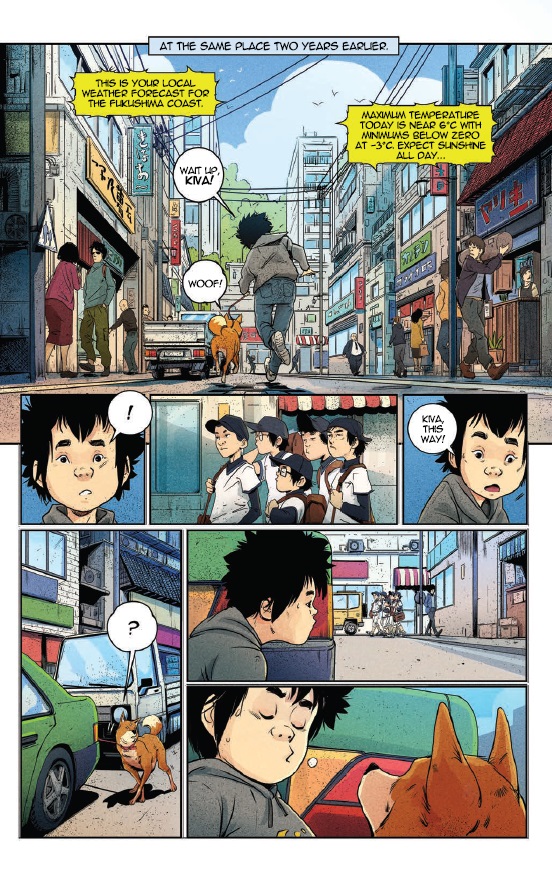
The credits for Kiva aren’t clearly-presented in the comic itself, and neither the publisher nor the creative team made a press kit with detailed information or bios available. I had to do a bit of Googling to unpuzzle it all, and the credits above are only my best guess. I apologize to any of the creators involved, listed or not, if I’ve erred!
From what I can infer, the idea and story were originated by Motoki Takatsu, and were expanded on by Yumiko Fujiwara – but who wrote what, in what capacity, I’m not sure. The artist, colorist and editor credits were easier to sort out, but there’s no information on a letterer (which I suspect means that it was the artist).
All of which is to say that I’m not entirely sure who’s responsible for what, here. Especially in the finer details of the writing.
Bashir Ahmed’s art excels at establishing atmosphere, mood, and a sense of place – the settings are all tremendously vivid and ground the story in reality. The animal characters are all similarly well realized – it gets a bit harder once Kiva and Cruz find and become the leaders of a whole bunch of abandoned younger dogs with no understanding of the world, and then even more more abandoned and feral dogs show up as antagonists, and the number of characters grows exponentially until I couldn’t tell all the dogs apart, but honestly, I blame the writers for adding a cast of thousands, many of whom don’t seem to fill a clear narrative role.
Ahmed tends to have less success making most of the human cast – of whom, again, there are a lot – pop. Only Toru and Niki, Cruz’s owner, really stand out.
And the sad part is, most of the attempts at human detail aren’t even necessary. One of the most interesting aspects of the best animal-focused stories is seeing the world through their eyes. Always imperfectly, of course, always anthropomorphized. That’s unavoidable. But it’s always incredible powerful when a creator attempts to imaginatively render how animals not only understand the world, but vitally, how they understand us. In Watership Down or Duncton Wood humans are an unknowable mystery, akin to aliens or the Fae or a force of nature, whose works and activities are sometimes murderous, sometimes benign, and always terrifying. In Mrs. Frisby and The Rats of N.I.M.H. we’re often-cruel, occasionally-kind Precursors, providing the very mixed blessings of knowledge and technology.
I think Kiva would have benefitted greatly from providing more a dog’s-eye view on humanity and human activity. The humans Kiva knows and loves could have stood in detail, while strangers and antagonists could have been depicted as a more abstracted collection of canine impressions. That would have both worked to Ahmed’s strengths, and helped readers see and understand things as Kiva does.
Instead, the action is split between Kiva and his adventures, and Toru and his family as they wait, far from home in ad hoc, emergency accommodations, and it’s all in painstaking detail.
The problem isn’t that the human drama isn’t important, or couldn’t be compelling – although the writing doesn’t manage to pull off compelling. It’s that definitionally, nothing that matters to the story can happen there. Obviously, when Kiva and Toru are reunited (or, depending on the kind of ending we get, when Kiva dies tragically before he and Toru can be reunited, or something), the story is over. So Toru can’t do anything that matters.
Indeed, the only thing that comes of the entire humans-waiting-miserably plotline is that Niki borrows a car, sneaks back into town, and rescues Cruz – but, of course, misses finding Kiva, because the story isn’t called Cruz. Toru, initially invited to join Niki on her foray, doesn’t go, and so the whole subplot only serves to separate Cruz and Kiva. Which, yes, furthers Kiva’s isolation and separation from his prior life, but that could have been achieved a dozen different ways that used up less narrative real estate or had more impact.
That’s not even the only wheel-spinning subplot. A huge amount of time and space is given over to Kiva’s backstory, two years before the rest of the plot. He’s one of many puppies living amongst the wild dogs – possibly one of the pups of the leader of the pack, although that’s not stated outright yet – and when humans cull the wild dog population, capturing or killing as many as they can, Kiva escapes and goes on a long journey through the wilderness, before meeting Toru by chance and being adopted as his dog.
And it all amounts to nothing. Because we already know the wild dogs hate humans and we can imagine why; we know that Kiva is taken in by Toru; and knowing that Kiva already survived a wilderness journey as a puppy only saps even more narrative tension from his journey now, in the aftermath of the Fukushima disaster.
I need to be painfully honest, here: When it became increasingly clear that the story wasn’t going to conclude in Kiva Volume 1, and that we were gearing up for a cliffhanger ending before, presumably, Kiva Volume 2 and maybe more, I groaned. Aloud. Because there’s so much extraneous material here that could have easily been excised, allowing a satisfying conclusion in a single volume.
I’ve mentioned in other reviews that I believe that there are stories that the serialized, periodical comics format isn’t best-suited for. Kiva is, I think, another example of that. I’m genuinely surprised it’s being published by a smaller press operating in comics’ Direct Market ecosystem – which, economically, requires serialized single issues, released through specialty comics shops, hopefully followed by a collection – and not by an imprint focused on original Middle Grade or YA graphic novels for the bookstore, school, and library trade.
A tighter narrative focus for Kiva himself and his perspective on events, eliminating most of the backstory, and crucially, most of Toru and his family waiting around for something to happen, keeping the humans off-stage, and this could have been an animal adventure to rival The Plague Dogs, if perhaps not Watership Down. (Nothing rivals Watership Down.)
Unfortunately, that’s not the story we got, and Kiva Volume 1, despite its artistic strengths, is in the end a story that moves too slowly, weighed down by too many subplots, and with too little payoff.
Issue #1 of Kiva Volume 1 is in stores now (as well as being available directly from the publisher). Further issues will presumably follow every two months or so (the schedule also isn’t clear in any available information I could find). If you love dogs, this comic features beautifully-drawn dogs (and the occasional cat), but otherwise I’m afraid that I can’t recommend it.

